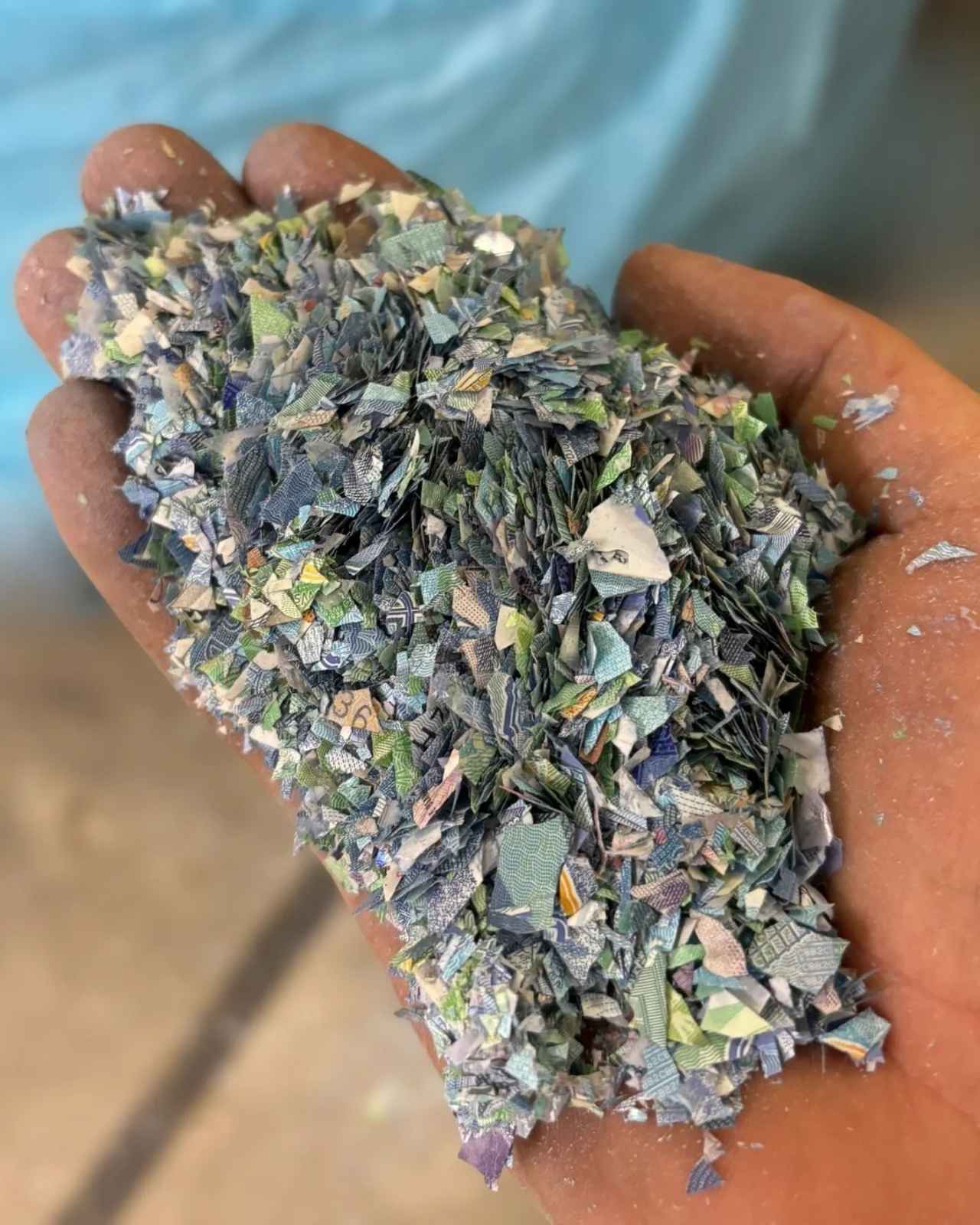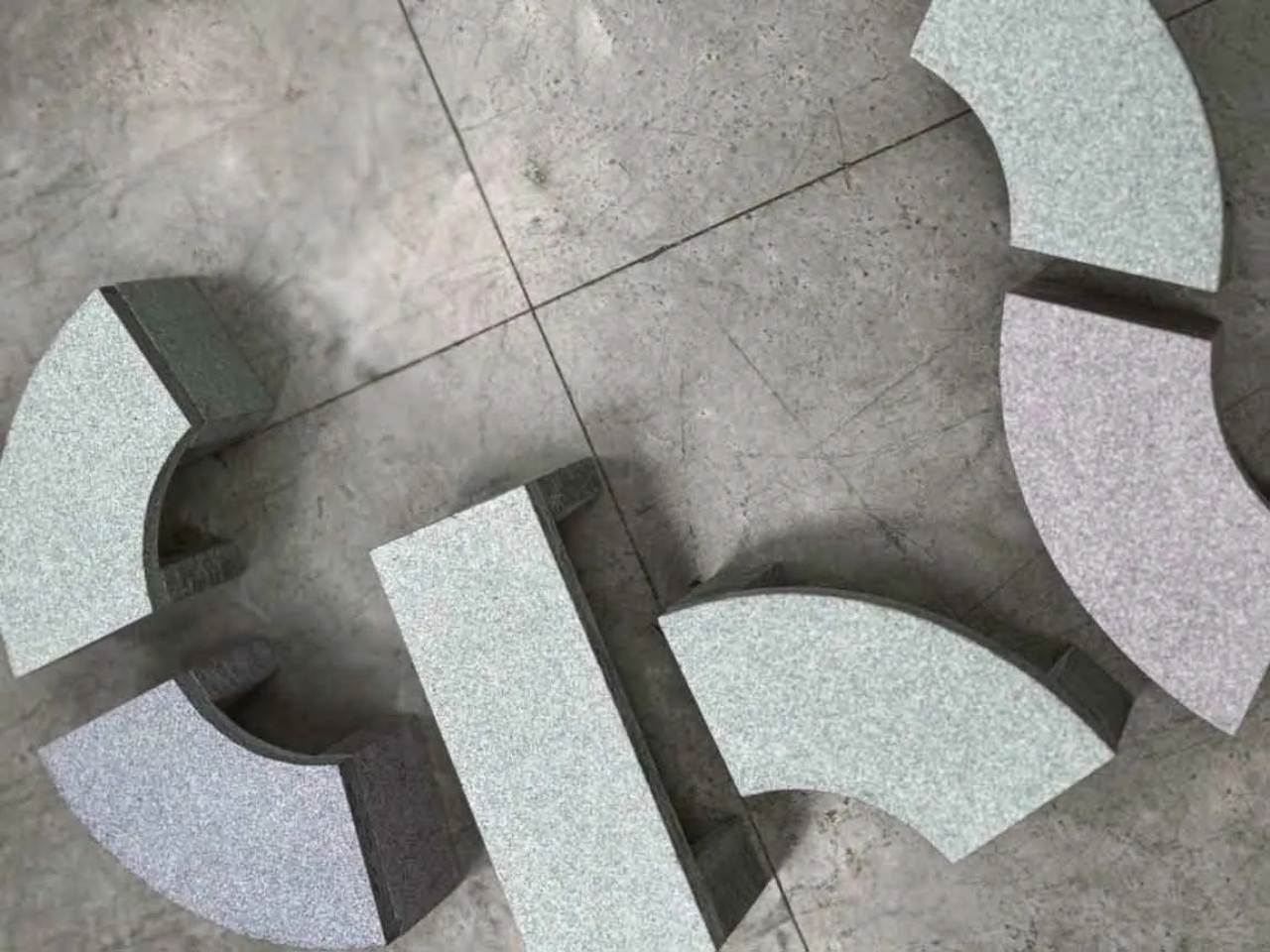
At this year’s London Design Festival, visitors to the Bank of England Museum were invited to experience Reconstructing Value, an extraordinary installation that literally lets you sit on a fortune. Conceived as a collaboration between designer Saskia Boersma, Surface Matter and the material studio Plasticiet, the project transforms £2.5 million worth of withdrawn British banknotes into a series of sculptural benches. These forms, shaped to echo the pound sign (£), question our collective understanding of worth, waste and value in contemporary society. Learn on SURFACES REPORTER (SR) how discarded currency can find a second life as art and furniture, and how this project redefines our perception on material worth which is not fixed in true sense by fluid in nature.

The shredded fibers are blended with Plasticiet’s proprietary low-impact plasticiser, a sustainable binding agent that gives the reconstituted material strength without erasing its tactile qualities.
The journey of this installation started long before the final sculptural pieces took shape. Once banknotes are withdrawn from circulation, they undergo a process of shredding and transformation. The shredded fibers are blended with Plasticiet’s proprietary low-impact plasticiser, a sustainable binding agent that gives the reconstituted material strength without erasing its tactile qualities. The outcome is that of richly textured sheets that retain the subtle security patterns and familiar hues of the original currency.

By reusing millions of pounds’ worth of banknote paper that would otherwise end up in landfills, the project demonstrates how waste can become resource, and how design can enable a circular economy.
Building on this unique base material, Surface Matter curated a range of complementary finishes inspired by the Bank of England’s historic interiors, right from Portland stone and Roman mosaic tiles to patinated brass and timber joinery. The resulting surface palettes form a compelling dialogue between tradition and innovation. Designer Saskia Boersma shaped these materials into curved, sculptural benches that double as public art. Each bench outlines the £ symbol when viewed from above, turning the simple act of sitting into a layered experience. Installed in the historic Stock Room of the museum, once home to vaults and ledgers, the benches transform a space of storage into one of reflection and interaction.

Each bench outlines the £ symbol when viewed from above, turning the simple act of sitting into a layered experience.
Beyond its striking aesthetics, Reconstructing Value carries a significant environmental message. By reusing millions of pounds’ worth of banknote paper that would otherwise end up in landfills, the project demonstrates how waste can become resource, and how design can enable a circular economy. SURFACES REPORTER (SR) believes that for Indian architects and designers, this installation opens up an important conversation around the potential of discarded or obsolete materials. Whether it’s repurposing construction debris, factory offcuts or even e-waste, the underlying idea is that value lies in not only creating new materials but also reimagining what already exists.
Image credit: Surface Matter